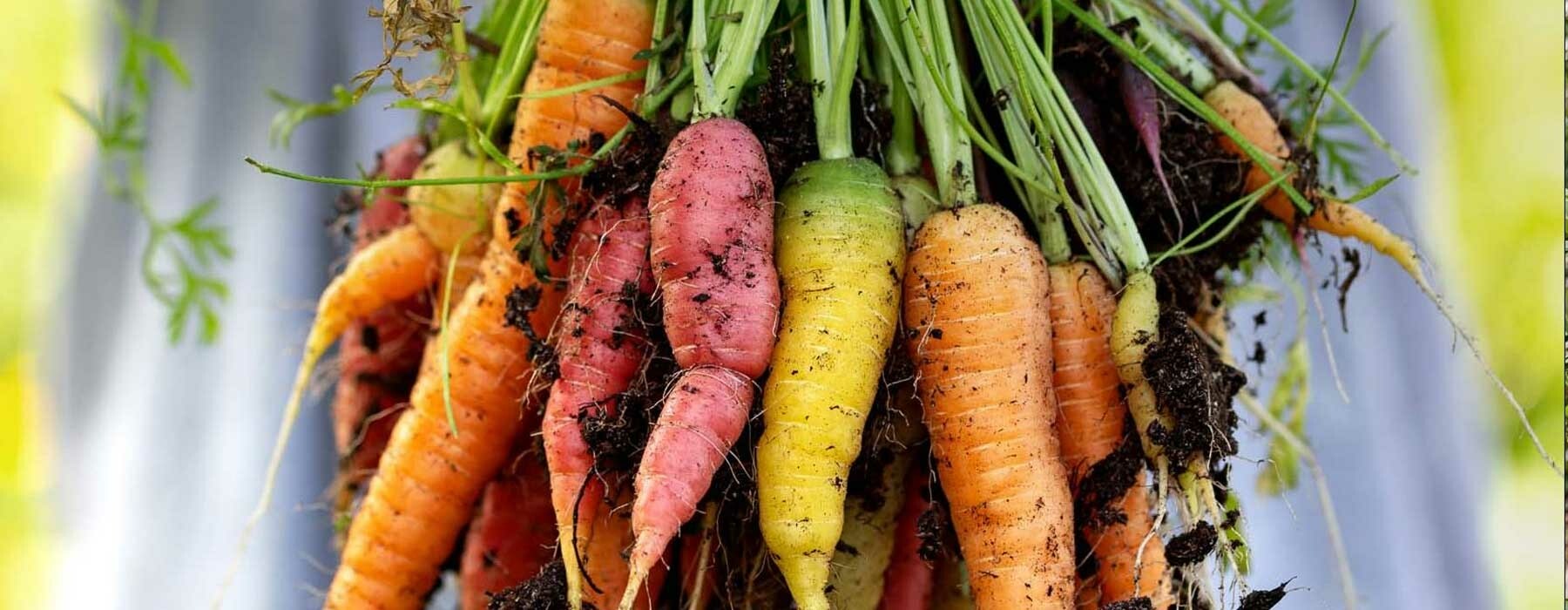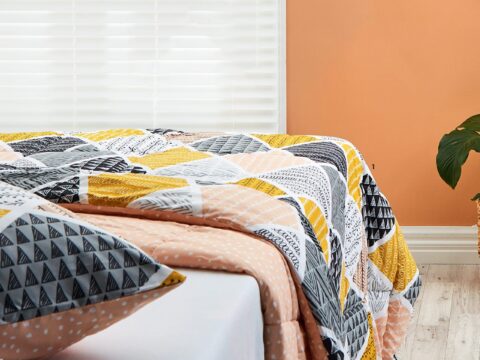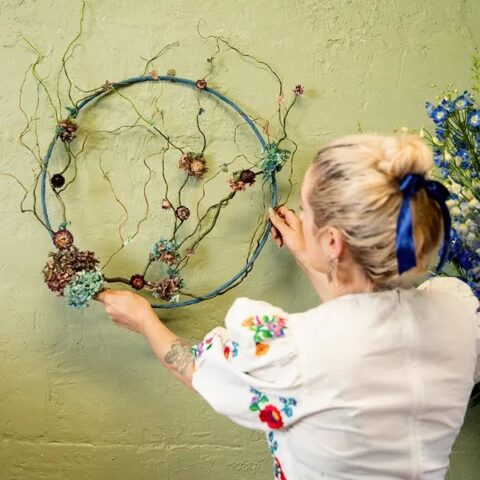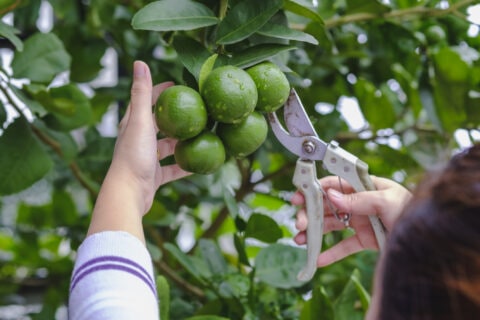Growing your own food is one of the most satisfying things you can do for yourself and the planet. But what should you grow? Rachel Clare nominates some standout fruit and veges with admirable attributes.
Just like Bird of the Year, in my garden I have my own official Vegetable of the Year. In 2018 it was cucumbers. We came home from a camping holiday and harvested about 20 of them. The following year it was strawberries. They were so perfectly red and juicy that I photographed them displayed in a blue and white bowl in various areas of the garden, then proudly posted pictures of them on Instagram.

Then in 2020, it was kohlrabi, a type of cabbage that is also known as a space cabbage because it looks like an alien. I’d never grown or eaten kohlrabi before, but unlike other forward-thinking gardeners, who’d cleaned the garden centres out of edible seedlings before we went into Lockdown 2020 Season 1, I hadn’t been that organised, so I raided my seed stash and ended up sowing lettuces and kohlrabi.
Despite the weirdness of that time, which included losing a job I loved, unsuccessfully trying
to homeschool my children and many fraught family bike rides, my successful crop of kohlrabi will always be a feature. When lockdown ended we hosted a massive dinner party in our very small house for all our friends and their kids, and I served up roasted kohlrabi.
It was heartening to see how many people turned to gardening during that first lengthy lockdown. Our reliance on the convenience of supermarkets and our busy lives have expedited the loss of that skill. But growing your own food is one of the most empowering things you can do. And while I’m never going to say gardening is cheap (my bank statement is testament to that) or that it’s the answer to widespread food insecurity in Aotearoa, I promise that growing what you love to eat will bring you joy. I’ve rounded up some crops with chops into individual categories based on their standout qualities.
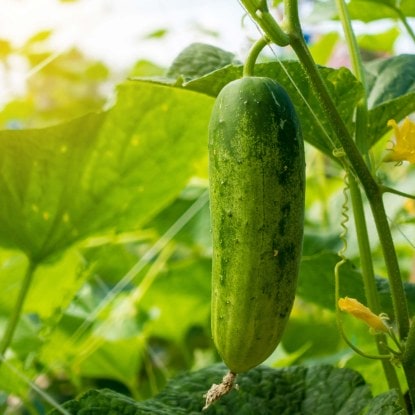
Most Fun To Harvest
When I was a kid, I went to a couple of “Big Dig” treasure hunt days at the beach where you dig with a spade for a prize and never won a thing. My sister was successful, however, and won a plastic visor, which I remember her showing off about quite a lot.
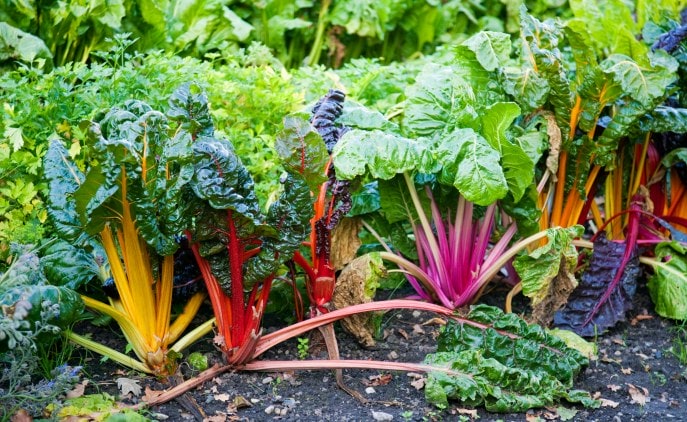
For me, growing potatoes has reversed some of that childhood disappointment. You plant one seed potato in the ground and 80 to 100 days later you dig up 10 to 15 of the waxy little beauties – they really are like edible buried treasure. You can buy seed potatoes from garden centres now. Plant them around 10-20cm deep in free-draining soil in a sunny spot. If you live in an area with a short summer, fast-track them in the garden by chitting them first. This involves laying them out in a single layer in a
warm, well-lit room until they grow sprouts about 2.5cm long. If you don’t have much space, good news! Potatoes grow very happily in pots. Drill holes into the bottom of a 10L bucket. Half-fill it with garden mix, add two spuds, then fill up the rest of the bucket with more garden mix. Water them around once a week.
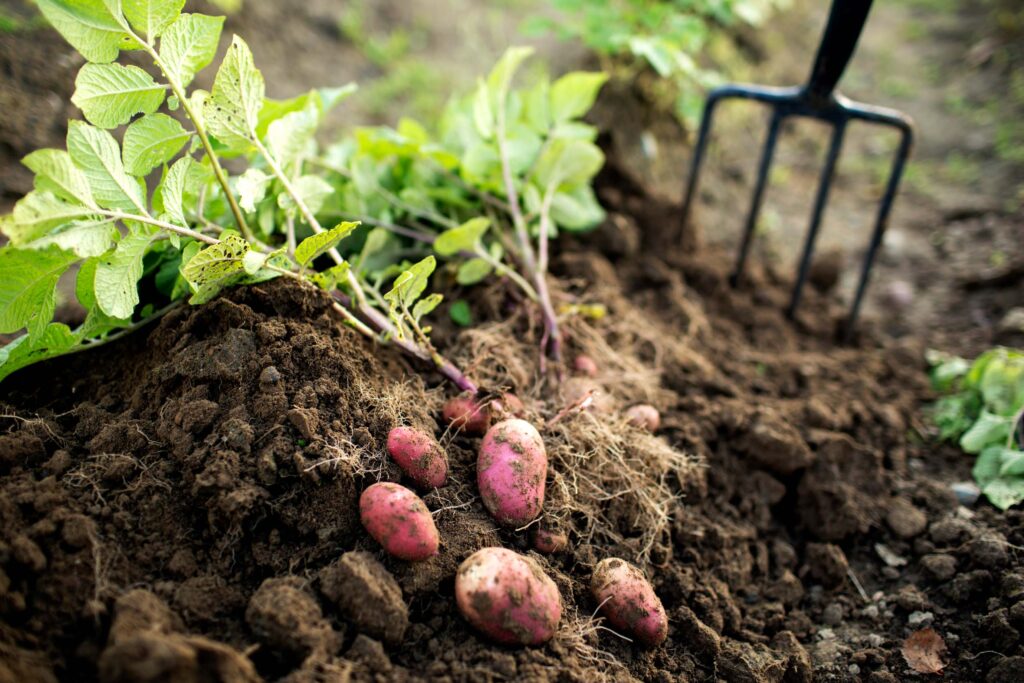
Best For Bulking Up Meals And Saving Bucks
Some vegetables are so easy to grow that once you have them in your garden you’ll be outraged at the idea of ever buying them again. Leading in this category is a vegetable many of us take for granted – good old silverbeet. While some of us are traumatised from childhood family meals where it was boiled to bits, it’s actually a very versatile vege and can be used in place of spinach, which is a lot more finicky to grow. I pack it into lasagnes and cannellonis, add it to vege fritters and also like stir-frying the young leaves with ginger and soy sauce. ‘Rainbow Lights’ silverbeet has gorgeous crimson, yellow and pale pink stems, and looks pretty as a picture in the garden. A doppelganger for silverbeet is perpetual spinach, which also grows a treat. And don’t forget about rhubarb – a perennial that will provide you with fruit for crumbles and muffins for years.
Top Crops For Avoiding Chemicals
Growing your own food means you know exactly where it comes from and can ensure it’s been grown without the use of herbicides or pesticides which aren’t good for us, wildlife or our soil. Every year in the US, the Environmental Working Group ranks pesticide contamination in 46 popular fruit and vegetables, then publishes a list of the top 12, called the Dirty Dozen. Celery and strawberries consistently appear on it, which is why I choose to grow these foods organically at home. Celery can be tricky to grow from seed, so plant seedlings instead, and be sure to keep it well-watered so it develops nice juicy stems. Strawberry plants will also be available in garden centres for another month or so. Spread a thick layer of mulch, such as pea straw, around strawberry plants to lock moisture into the soil (water the soil first) and to keep the fruit off the bare soil.
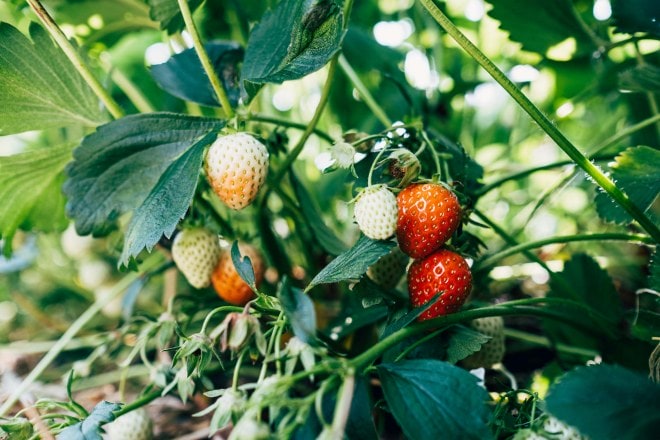
Most Environmentally Friendly
We’ve made good progress with ditching single-use plastic bags, but too many products come wrapped in plastic, and one of the worst offenders is the shrink-wrapped cucumber. It’s a trick producers use to keep them fresher for longer, but beat that and grow your own! It’s too early to plant cucumbers outside now but you can get them started indoors in a sunny spot. Plant individual seeds in pots around the size of a 500g yoghurt pot, then plant them out after the last frost (usually around Labour Day weekend or later), and give them something to climb. Or skip the seeds and buy seedlings in late October or November.
Always Worth The Wait
If delayed gratification excites you, then you’re a perfect match for asparagus. It takes two years from planting before you should harvest this coveted spring crop. Once your asparagus bed is established, it will reward you for years. You can buy crowns (a royal-sounding name for root clusters) from garden centres until mid-spring. Plant them into 20cm-deep trenches, covered with just 5cm of soil, in a sunny spot in your garden. Because it’s a long-haul crop and asparagus beds can look a bit messy (they’re the same family as asparagus ferns), put some thought into where you’re going to grow
them before you commit.
Top Of The Pots
You don’t need a quarter-acre section to grow your own food. If you can remember to water your plants (set a reminder on your phone if you can’t), then you can grow a range of crops in pots. Herbs are some
of the easiest edibles to grow in containers, particularly Mediterranean ones such as thyme, sage and oregano, which can hack dry conditions. Buy herb plants from the garden centre rather than supermarket herbs, which have been grown hydroponically and won’t adapt to life in the dirt. Other great crops for pots include sugar snap peas – provide them with something to climb – carrots, and cherry tomatoes.
Best Lucky Dip
My 10-year-old loved it when we sowed a crop of ‘Rainbow Blend’ carrots. You never know which colour – yellow, purple, white or pink – you’re going to pull out of the ground. Similar are ‘Easter Egg’ radishes which are a pretty-as-a-picture mixed blend in different colours. Always sow root crops like radishes and carrots from seed, rather than seedlings, into well-tilled soil. And if rainbows are your thing, then glass gem corn is also a beauty with its multicoloured kernels and can be sown in late spring and early summer.
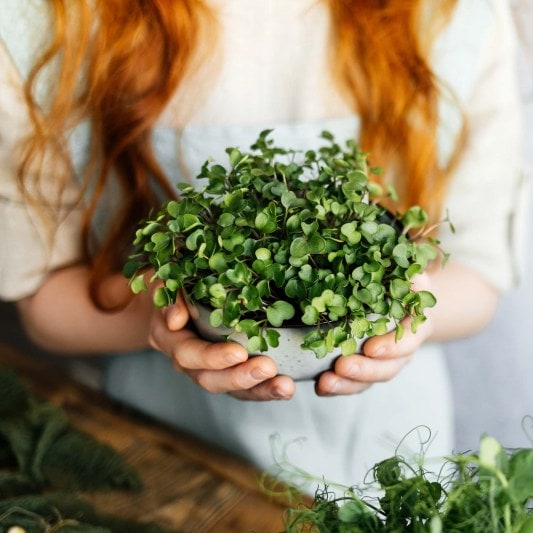
Speediest
If you want fast food, sow a crop of microgreens. Sprinkle seeds onto a tray of damp potting mix or seed-raising mix, press them in gently and sprinkle a tiny bit of mix over time. Spritz your microgreens daily, being sure to keep them moist at all times. After 10 days they’ll be ready to harvest. Follow this method for mesclun mixes as well, which you can treat as “cut and come again” crops, harvesting what you need while the plant keeps growing.
PHOTOGRAPHY: GETTY

